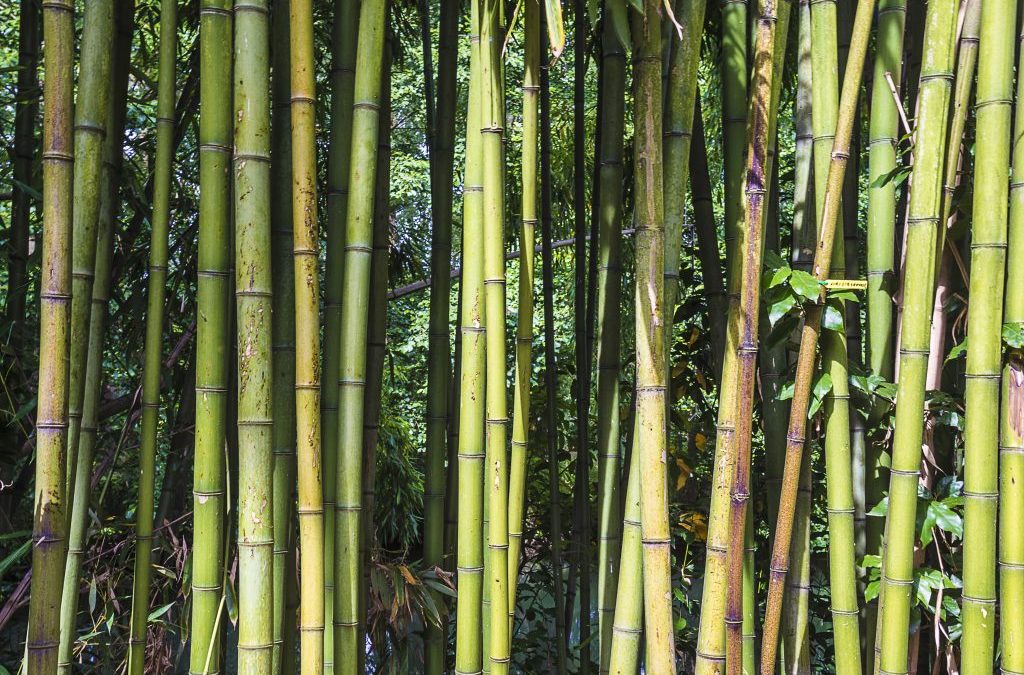Bamboo is a fast-growing, renewable, non-timber and non-herbal plant. It has high biomass productivity, CO2 absorption and sequestration capacities, and high soil and water conservation capacity. In the lengthy history of its utilization, its contributions to human beings are far beyond imagination.
In ancient times, bamboo was indispensable; it was used in clothing, food, housing, transportation, utensils, agriculture and business production, to name a few. In East Asia, bamboo is still respected as a noble person with respectful virtues; the bamboo spirits are praised and are regarded as the paragon of morality. The famous modern-day scientist, Joseph Needham, said that the East Asian civilization is none other than a bamboo civilization.
In recent years, the bamboo sector has developed from a small-scale cottage industry to a prosperous industry with great potential and rapid growth.
Bamboo use has extended from various hand-made crafts, to a considerably wider range of products, including replacing wood timber in certain applications. Flooring, decorative panels and large structural poles and beams are now being produced using bamboo.
Bamboos are also being processed into fiber for industrial use. Taking advantage of high axial tensile strength and flexibility, bamboo winding composite material is now being used for underground pressure pipelines and even utility tunnels, high-speed train carriages, containers, large-scale storage tanks, and disaster resistant houses.
Bamboo fiber is also applied in textiles and other decorative materials; in China, many five-star hotels, conference halls, theaters and high-end offices now use bamboo materials in their interior decoration, installation and furniture.
What’s more, biomass renewable energy pellets, bamboo charcoal and bamboo charcoal fiber products have already shown great potential for future development. On the other hand, a series of food, health and medicinal products are developed from bamboo shoots, and extracts from bamboo culm and bamboo leaves.
One thing that makes bamboo particularly appealing is its capacity for use in eco-system reconstruction and rehabilitation, forest landscape and urban greening, as well as eco-tourism development.
During the Forum of China-Africa Cooperation in September 2018, in response to appeals from a number of African countries, the Chinese government promised to strengthen capacity-building activities in Africa, to support the development of the bamboo sector, and establish the Africa Bamboo Center. This reflects an increasing desire for bamboo, particularly in Asia, Latin America, Africa and Oceania, leading to a peak period for its development.
So, how do we go about developing the bamboo sector, and how do we achieve sustainability through that development? These are the burning issues for quite a number of producing countries that are ready to develop bamboo, or have already initiated bamboo plantations and processing.
The development of the sector is quite different from developing common production sectors – it involves a wide range of interest groups and many stakeholders: these are local communities, government decision-makers, entrepreneurs, scientists and technicians. Their participation is indispensable – multi-participation is a must.
To develop the bamboo sector and achieve sustainability the stakeholders need to form an adequate cooperation mode, in which the various interest groups and stakeholders support and depend on each other. In this way they can form a shared future that harmonises the primary, secondary and tertiary industries of the sector in a mutually-dependent, benefit-sharing and multi-win situation.
Source: https://blog.cabi.org/2018/09/18/developing-a-sustainable-bamboo-industry/


Recent Comments